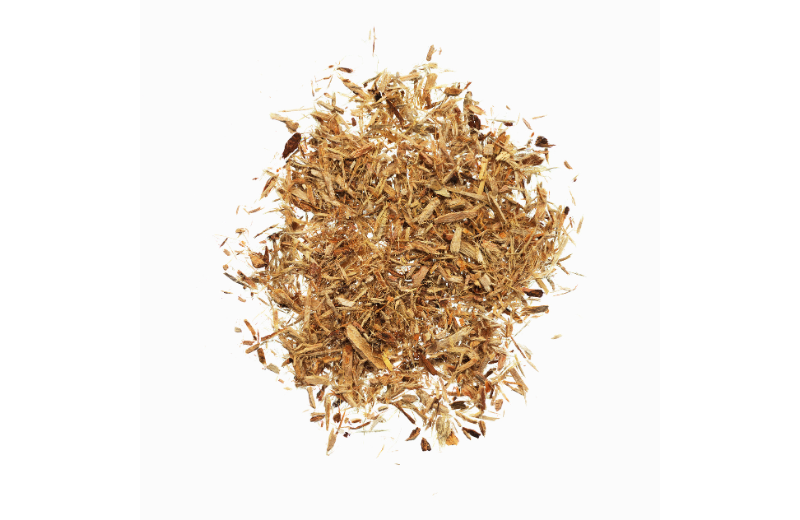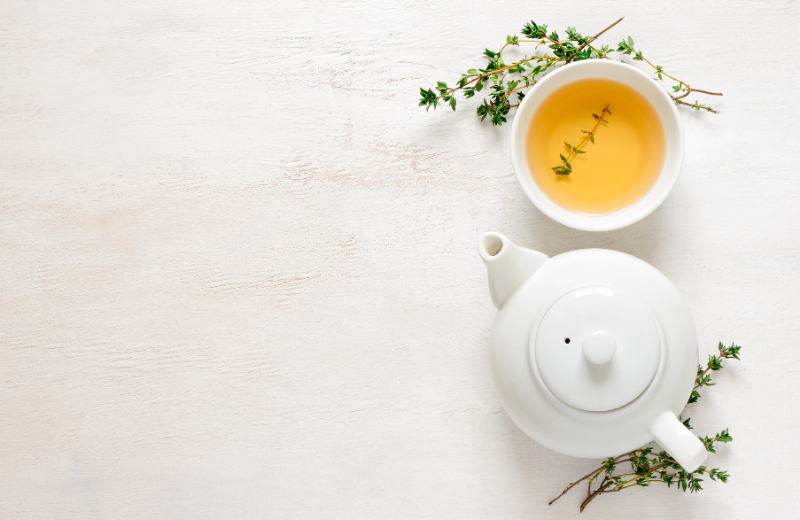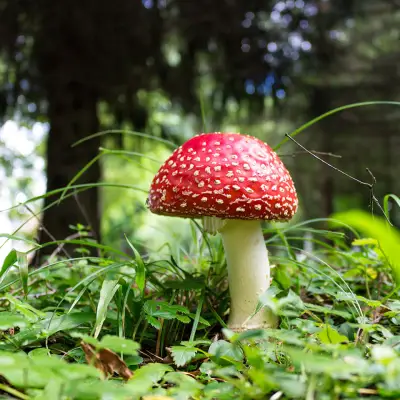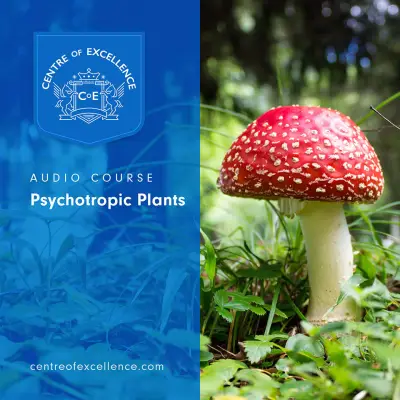If you’ve found yourself looking for natural ways to ease digestive discomfort, soothe a sore throat or support gut health, you may have stumbled upon slippery elm. Used for centuries in traditional herbal medicine, this tree bark might seem unassuming, but it’s packed with soothing qualities. In this article, we’ll explore everything you need to know, from its everyday uses and health benefits to safe dosage and potential side effects.
This article is for informational purposes only and is not a substitute for professional medical advice, diagnosis, or treatment. Always consult with your GP or a qualified healthcare professional before starting any new herbal remedies, especially if you are pregnant, breastfeeding, taking medication, or managing a health condition.
Jump to:
- What is Slippery Elm?
- The Benefits of Slippery Elm
- What Types of Slippery Elm Can You Take?
- How Much Slippery Elm Should You Take, and When?
- The Best Time to Take Slippery Elm
- What Are the Side Effects of Slippery Elm?
- Who Should Avoid Slippery Elm?
- Is Slippery Elm Safe for Long-Term Use?
- Frequently Asked Questions About Slippery Elm
- Study Our Master Herbalist Diploma for £29
Recommended for you!
Best SellersWhat is Slippery Elm?
Slippery elm (Ulmus rubra), also called red elm or slippery bark elm, is a tree native to North America. The inner bark is where the magic happens. Once ground into powder, it becomes rich in mucilage—a gel-like substance that becomes slippery when mixed with water. This mucilage coats and soothes irritated surfaces, which is why slippery elm has become such a staple in herbal medicine.
The definition of slippery elm is a herb used to protect, coat and calm the body’s internal tissues. It’s most commonly consumed as a tea, lozenge, capsule or powder.
The Benefits of Slippery Elm

Slippery elm is loved for its broad range of soothing properties. Here’s a closer look at what slippery elm is good for:
Digestive Comfort & Gut Lining Support
Slippery elm’s mucilage coats the lining of the stomach and intestines, easing irritation caused by acid reflux, gastritis, IBS, and ulcers. Taken as a warm drink or powder mixed into water, it can calm inflammation, reduce discomfort, and support gut healing.
Soothing Sore Throats & Dry Mouth
When taken as a lozenge or tea, slippery elm forms a protective barrier over the throat and mouth, offering quick relief from soreness, hoarseness, and dryness. It’s often used during colds, flu, or vocal strain to ease discomfort without numbing the tissue.
Natural Support for Diarrhoea & Constipation
As a gentle bulk-forming agent, slippery elm can help manage both diarrhoea and constipation by regulating bowel movements and absorbing excess moisture. This dual action makes it particularly helpful for IBS and diverticulitis sufferers seeking balance.
Anti-Inflammatory & Healing Properties
Slippery elm bark contains tannins and polysaccharides that offer mild anti-inflammatory effects, supporting wound healing when used topically and reducing internal irritation. It’s traditionally used for soothing ulcers, inflamed bowels, and irritated skin.
Prebiotic Fibre for Long-Term Gut Health
Rich in soluble fibre, slippery elm feeds beneficial gut bacteria, encouraging a healthier microbiome. Regular use may help with bloating, regularity, and overall digestive wellness, while also aiding in the repair of the gut lining.
What Types of Slippery Elm Can You Take?

Slippery elm is available in several forms, making it easy to choose an option that fits your lifestyle and needs:
- Powders: A traditional form that can be mixed into warm water or smoothies. Ideal for digestive issues like reflux, gastritis, or IBS.
- Capsules and Tablets: Convenient and pre-measured, usually containing 400–500 mg of powdered bark. Great for daily gut support and easy to carry.
- Teas: Made by steeping powder or tea bags in hot water. Commonly used to soothe sore throats, reduce bloating, or ease digestion.
- Lozenges: Quick relief for sore throats and dry mouth. They coat and soothe the throat while being easy to take on the go.
- Liquid Extracts and Tinctures: Fast-absorbing and concentrated. Typically used for quick digestive or throat relief. Learn how to make your own herbal tinctures.
- Topical Pastes or Poultices: Made by mixing powder with water and applied to the skin. Useful for minor burns, wounds, and irritation.
- Combination Products: Found in gut health blends with herbs like marshmallow root or aloe vera. Designed to target multiple symptoms at once.
How Much Slippery Elm Should You Take, and When?

The right dose depends on the form and your reason for using it. Always follow product instructions and start small if you're new to it.
- Powders: 1 teaspoon (1–2 g) in warm water, up to three times daily. Ideal before meals or bedtime for digestion and reflux.
- Capsules and Tablets: 400–500 mg per capsule, usually 2 capsules once or twice daily. Easy for general digestive support.
- Teas: 1 teaspoon of powder or a tea bag steeped for 10–15 minutes. Drink up to three times a day for soothing relief.
- Lozenges: Take one every 2–4 hours as needed. Best for soothing sore throats and dry mouths.
- Liquid Extracts and Tinctures: Typically 1–2 ml, two to three times daily. Dilute in water for easier use.
- Topicals and Poultices: Mix powder with water into a paste. Apply to affected skin and cover lightly.
- Combination Products: Follow the label dosage based on product strength. Always check the amount of slippery elm included.
The Best Time to Take Slippery Elm
The best time to take slippery elm depends on your needs. For reflux or gastritis, take it 30–60 minutes before meals or bedtime to coat the stomach lining. If using it for constipation or bloating, a morning dose can support bowel movement and comfort throughout the day.
For sore throats or dry mouth, lozenges or teas can be taken as needed. When combining with medications or supplements, leave at least a two-hour gap to avoid absorption issues. If you’re taking it to support restful sleep or ease night-time digestion, a warm dose before bed is ideal.
What Are the Side Effects of Slippery Elm?

Most people tolerate slippery elm well when used in moderate amounts and from reputable sources. However, side effects can occur, especially if taken in large doses, for extended periods, or alongside certain medications. Although uncommon, some reported side effects include:
- Bloating, gas, or mild digestive discomfort when first starting
- Nausea or queasiness, particularly with larger doses
- Skin irritation or rash in those with sensitivity or allergies
- Interference with the absorption of medications, such as iron or certain antibiotics
- Frequent urination or a feeling of fullness in the stomach
Slippery elm’s mucilage can coat the digestive tract, which is helpful for healing but may slow the absorption of prescription medicines. To prevent interactions, it’s best to take slippery elm supplements at least two hours apart from medications. Starting with a low dose and gradually increasing it allows your body to adjust and helps minimise any potential side effects.
Who Should Avoid Slippery Elm?
Slippery elm is generally safe for healthy adults when used appropriately, but some groups should be cautious. Pregnant or breastfeeding women are advised to avoid it, as traditional sources suggest it may stimulate the uterus, and there’s little modern research confirming its safety during pregnancy or lactation.
People taking regular medications, especially those with narrow dosing windows like warfarin, digoxin, or thyroxine, should speak to a healthcare provider before using slippery elm, due to its potential to reduce drug absorption. Similarly, those with chronic digestive or liver conditions should consult a professional, especially if planning long-term use.
People with known allergies to elm trees or tree bark should be careful, particularly when using slippery elm topically or in loose powder form. If you're scheduled for surgery, it's best to stop using slippery elm at least two weeks beforehand, as its coating effect might interfere with medication absorption or preparation instructions.
Is Slippery Elm Safe for Long-Term Use?
Slippery elm is considered safe for short to moderate use, especially during flare-ups of digestive discomfort or throat irritation. However, its long-term safety has not been thoroughly studied, so taking it daily for extended periods without medical supervision is not recommended.
To keep it effective and reduce the risk of side effects, herbalists often suggest using slippery elm in cycles, such as taking it for four to six weeks, followed by a short break. This approach allows the body to reset and ensures the herb continues to offer benefits without overstaying its welcome.
Recommended for you!
Best SellersFrequently Asked Questions About Slippery Elm.
How long does it take for slippery elm to work?
For sore throats, results are often immediate. For digestion, it may take a few days to notice consistent relief, especially when used consistently.
Is slippery elm a laxative?
Not in the traditional sense. It’s more of a gentle, fibre-based support for bowel regularity, helping to soften and move stools naturally.
Can slippery elm help with bloating?
Slippery elm’s soothing nature may ease trapped wind and reduce bloating over time. It can also help calm an inflamed gut lining, which often contributes to bloating.
What does slippery elm do for females?
Slippery elm may support vaginal lubrication, reduce dryness, and promote digestive comfort. Some women also report improved comfort during menopause-related changes.
How long does it take slippery elm to work for lubrication?
There’s no guaranteed timeline, but some people notice effects within a week or two. Results vary depending on consistency and individual body responses.
Does slippery elm reduce anxiety or help with infections?
While not a proven treatment, better gut health can positively impact mental wellbeing. Its use for infections is traditional and should never replace medical care, though some find it calming in herbal blends.
What are the spiritual benefits of slippery elm?
Traditionally, slippery elm has been viewed as a grounding and protective herb, used in rituals to promote peace and healing. Some believe it strengthens emotional resilience during times of stress.
Is slippery elm good for hair and skin?
Slippery elm can be added to DIY face or hair masks for added moisture and shine. Its mucilage helps hydrate dry areas and may soothe irritated skin.
Study Our Master Herbalist Diploma for £29
If you’ve found yourself fascinated by the potential of slippery elm and other natural remedies, why not deepen your understanding? Whether you're a beginner or looking to expand your knowledge, Centre of Excellence offers a comprehensive Master Herbalist Diploma Course, designed for people of all levels.
The course covers everything from herb identification and preparation to building herbal blends for specific emotional and physical needs. Follow the link to access the course for just £29!













